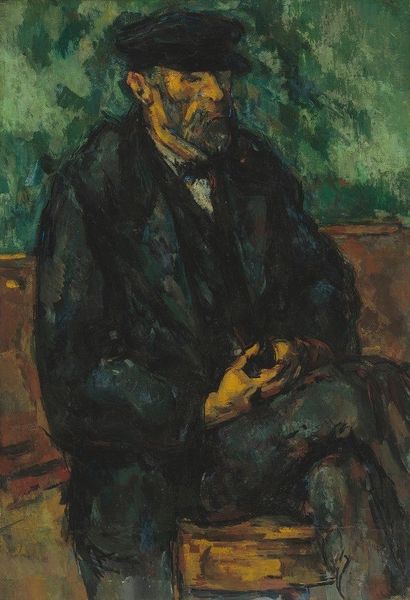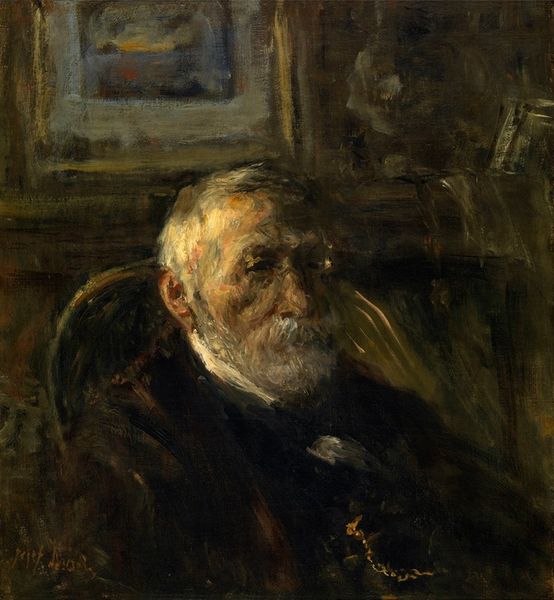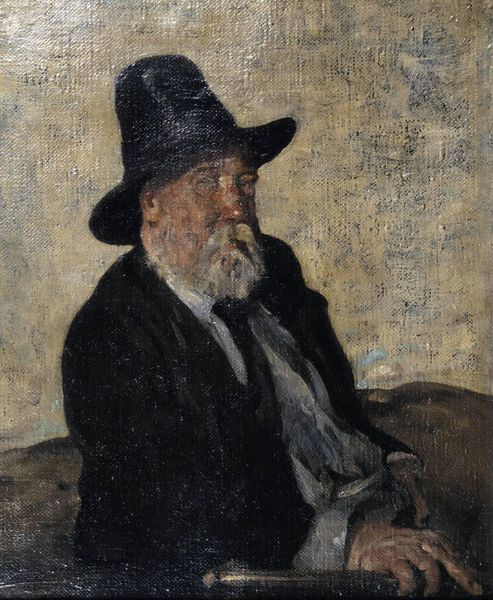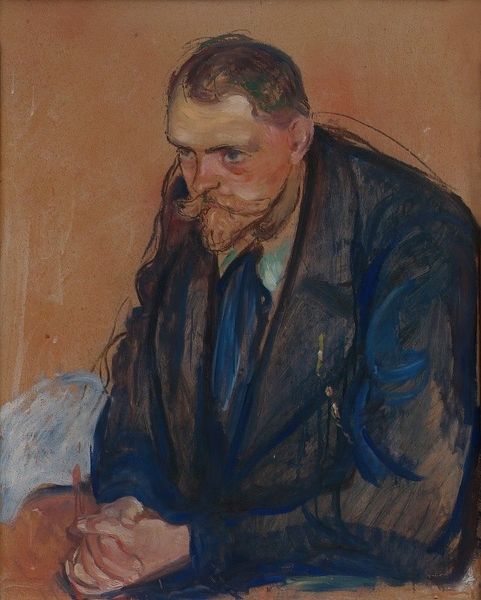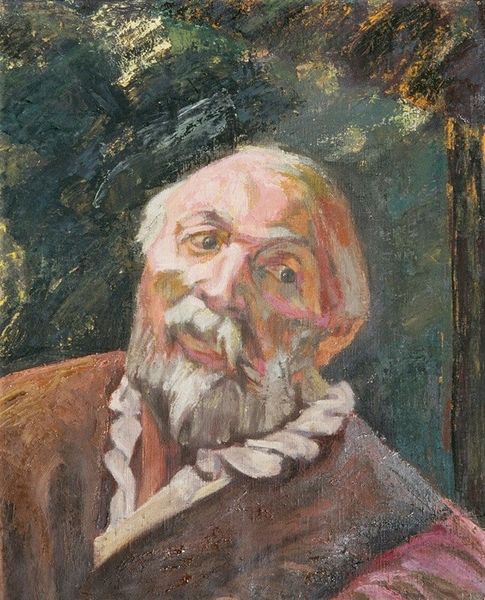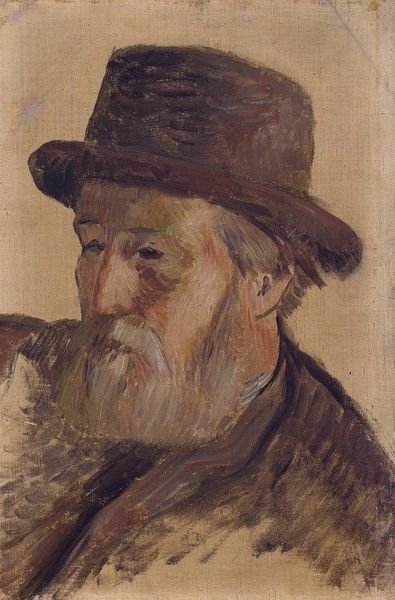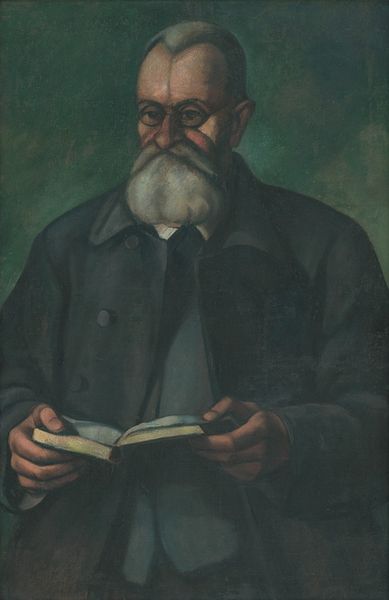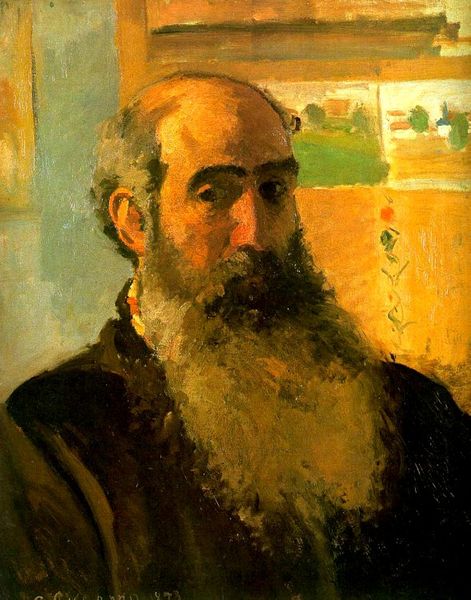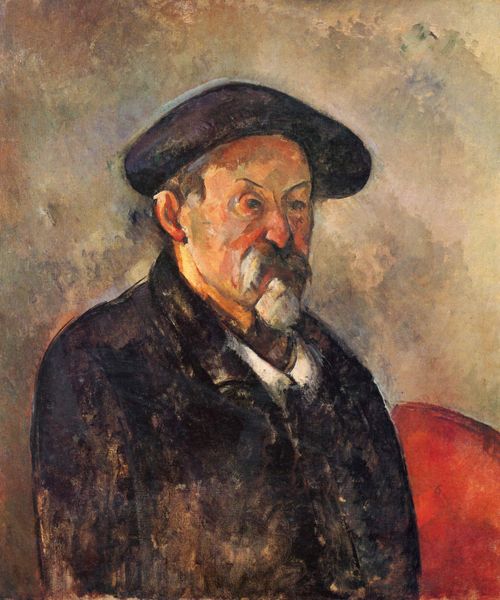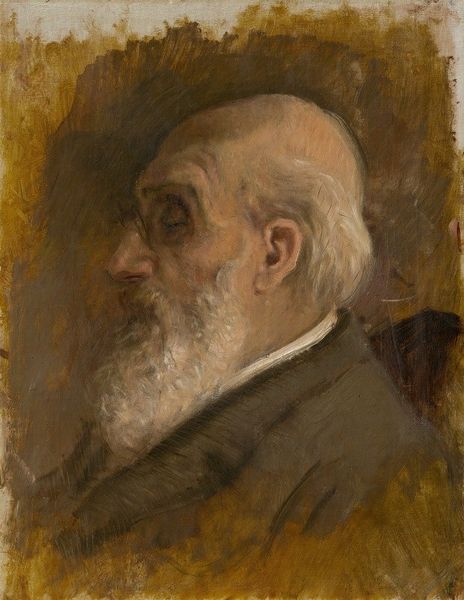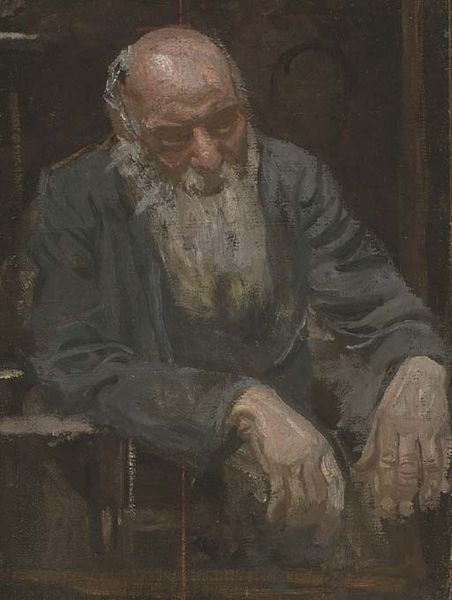
oil-paint
#
portrait
#
impressionism
#
oil-paint
#
oil painting
#
post-impressionism
Copyright: Public Domain: Artvee
Paul Gauguin created this oil on canvas painting, ‘Vieil homme au bâton’, or ‘Old man with a stick’, in France. We see a portrait of a man, probably a peasant, resting with his hands joined over a walking stick. It’s interesting to consider this image in the context of France in the late nineteenth century, a time of huge social change. The institutions of art at this time were dominated by the Academy des Beaux-Arts, which promoted conventional and conservative styles. Gauguin, however, associated with Impressionist artists like Monet, Renoir and Degas, who rejected Academic values and began to depict scenes of everyday life in a more modern way, focusing on themes of industrialization, urbanization, and the changing social order. The Impressionists questioned the traditional hierarchy of genres, elevating humble subjects to the status of high art. The art historian can research the exhibition history of this work and study the correspondence of the artist to understand better the image's complex cultural meanings.
Comments
No comments
Be the first to comment and join the conversation on the ultimate creative platform.
